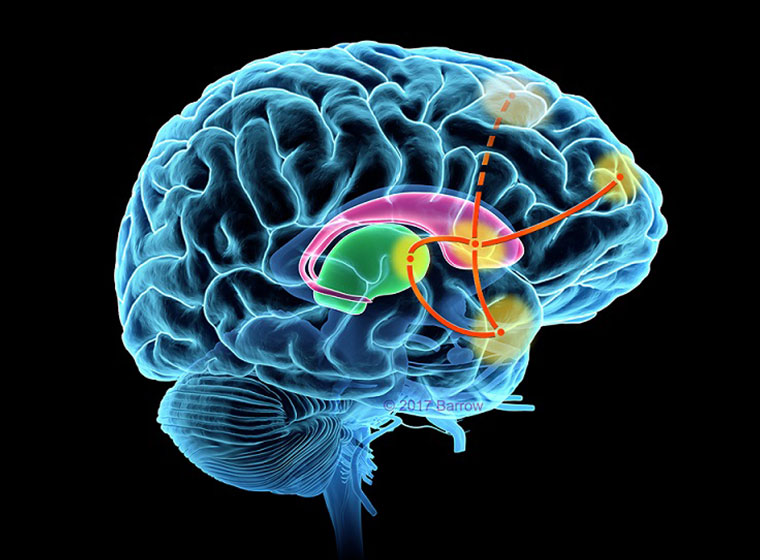In the last decade, efforts have been focused on meeting the needs of teens with autism as they transition into adulthood. In recent years, the first people diagnosed with autism spectrum disorder (ASD) are now reaching old age and there are many more to follow.
Christopher Smith, Ph.D., SARRC’s vice president and research director, and Leslie Baxter, a clinical neuropsychologist at Barrow Neurological Institute, are conducting a study to understand the effects of aging and ASD so providers can better meet the needs of an aging population of individuals going forward.
Their study investigates the cognitive, behavioral and neurological aspects of aging by comparing two age groups of men with high-functioning ASD, 18 to 25 and 40 and over.
Participants completed a series of tests that require thinking while a Magnetic Resonance Imaging (MRI) machine was scanning their brain activity. Study results showed that the men in the ASD group made more errors than their counterparts, indicating a greater impairment of executive function. Overall the study is indicating that people with ASD may be more vulnerable at earlier ages to some of the effects of aging than those who are typically developing.
On Jan. 3, 2018, the Department of Defense—the funding agency—recognized their efforts as a new and groundbreaking effort in a published article, “Understanding the Consequences of Aging in Autism Spectrum Disorder.”
“The study findings were specific to executive function, as no differences were seen in delayed memory or identification,” says Dr. Smith.
Executive function is a set of mental skills that help people plan, organize and complete tasks and is often an area of weakness for those with ASD.
“We found that study participants with ASD showed these deficits at younger ages than typically developing individuals,” explains Dr. Smith.
When comparing the MRI results, several areas were equal—working memory and the collection of regions in the brain that tell a person which stimuli require their attention, like when a person should cross the street, were the same in both groups. However, a difference was found in the cortico-striatal-thalamic-cortical (CSTC) circuitry network, which is a network involved with regulating attention and activity.
Although aging in general often brings cognitive declines, one conclusion Drs. Smith and Baxter drew from their research is that those with ASD may be more vulnerable to some of the effects of aging, and this research gives us some information about the kinds of interventions we’ll need to help maintain their level of functioning as they age.
The study was conducted as a collaborative effort between Dr. Leslie Baxter, clinical neuropsychologist and head of the Human Brain Imaging laboratory at Barrow Neurological Institute, and Dr. Christopher Smith, experimental psychologist and research director at the Southwest Autism Research & Resource Center, as part of an Autism Research Program Idea Development Award in 2014. Dr. Blair Braden also collaborated as Dr. Baxter’s postdoctoral fellow. For more on the study, click here.

